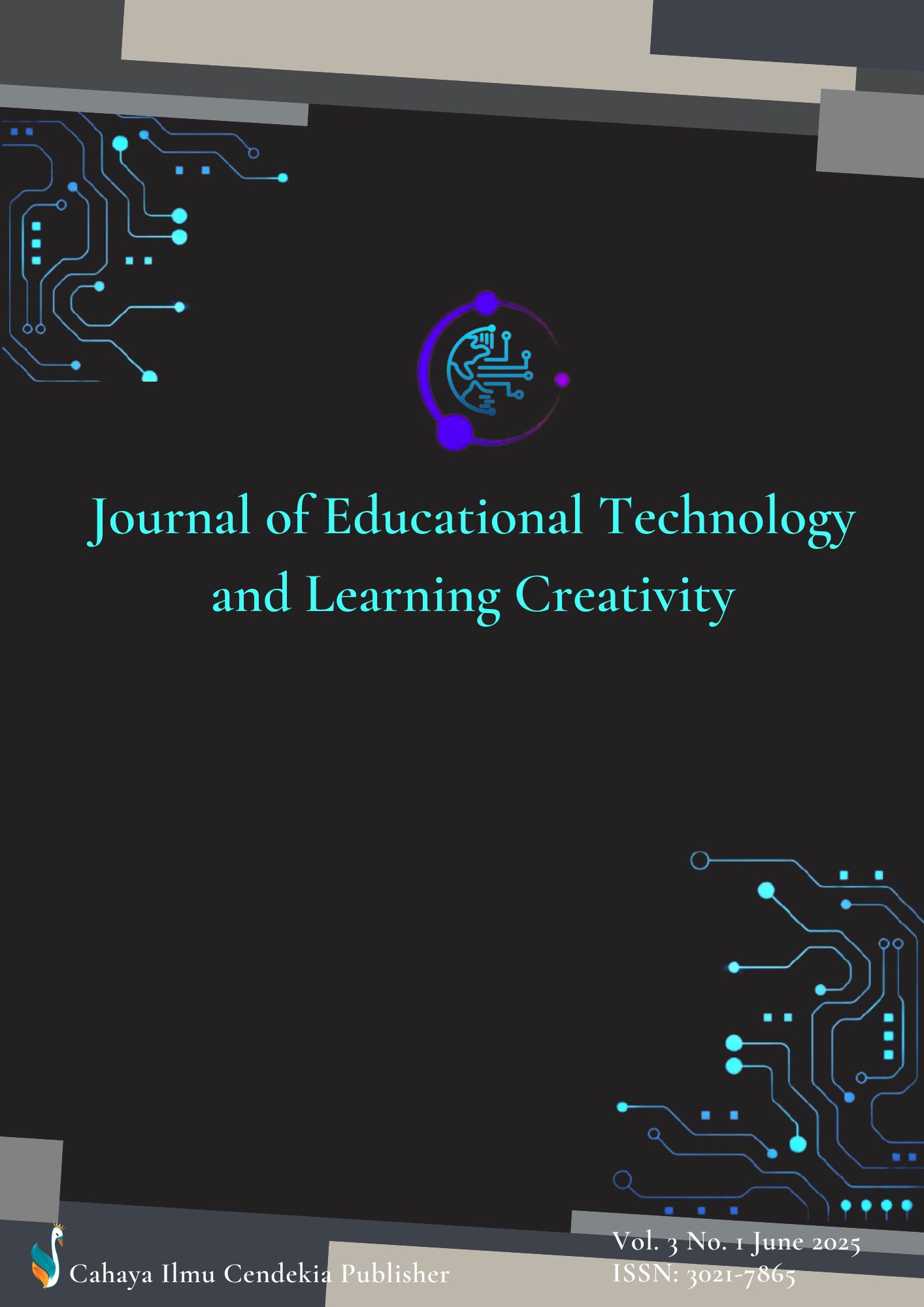Utilization of E-Health Technology in Optimizing Health Services to Increase Patient Satisfaction
Abstract
Purpose of the study: This study aims to explore the utilization of e-health technology in health service delivery and its impact on patient satisfaction through a comprehensive and contextual qualitative approach.
Methodology: The approach used in this study is a qualitative approach with the aim of providing a comprehensive and in-depth picture of e-Health-based Health Service Innovation in Increasing Public Satisfaction at Community Health Centers.
Main Findings: This study shows that e-health utilization is influenced by the type of service, age, and digital literacy. Online registration is the most preferred, while other features are less understood. Patient experiences include efficiency, digital literacy barriers, technical constraints, and satisfaction that vary. The main influencing factors are age, access to technology, health worker attitudes, and application design. Health workers play a key role in facilitating the digital transition, with patients expecting a simpler, more inclusive, and trained system.
Novelty/Originality of this study: This study offers new insights into how digital literacy, patient context, and health worker support affect the acceptance and effectiveness of e-health services. It contributes to knowledge by highlighting the importance of user-centered implementation and the role of health professionals in facilitating digital transitions in healthcare.
References
R. Khan, S. Khan, H. M. Almohaimeed, A. I. Almars, and B. Pari, “Utilization, challenges, and training needs of digital health technologies: Perspectives from healthcare professionals,” Int. J. Med. Inform., vol. 197, no. September 2024, p. 105833, 2025, doi: 10.1016/j.ijmedinf.2025.105833.
S. Botwright et al., “Good practices for health technology assessment guideline development: A report of the health technology assessment international, HTAsiaLink, and ISPOR special task force,” Value Heal., vol. 28, no. 1, pp. 1–15, 2025, doi: 10.1016/j.jval.2024.09.001.
D. Mizrahi et al., “Digital health technology use among people aged 55 years and over: Findings from the 45 and up study,” Int. J. Med. Inform., vol. 200, no. November 2024, p. 105911, 2025, doi: 10.1016/j.ijmedinf.2025.105911.
D. J. Kuss, “Online harms: Problematic technology use is a public health concern and requires a multistakeholder approach,” Addict. Behav. Reports, vol. 21, no. March, p. 100602, 2025, doi: 10.1016/j.abrep.2025.100602.
L. Mou et al., “Early health technology assessment of tongue swab for non-sputum based pulmonary tuberculosis diagnosis in Thailand,” Lancet Reg. Heal. - Southeast Asia, vol. 33, p. 100533, 2025, doi: 10.1016/j.lansea.2025.100533.
S. Phommachanh et al., “Situation analysis of evidence-informed health decision-making in Lao PDR: the case of health technology assessment,” Lancet Reg. Heal. - West. Pacific, vol. 57, p. 101534, 2025, doi: 10.1016/j.lanwpc.2025.101534.
L. D. Tien, D. K. Vig, A. Mahajan, and M. H. Tsai, “Analysis of health technology solutions for perioperative care,” JCA Adv., vol. 2, no. 2, p. 100118, 2025, doi: 10.1016/j.jcadva.2025.100118.
A. Prakash, Pempa, T. Duba, K. C. Sarin, S. V. Dabak, and U. Tashi, “Advancing evidence-based decision-making in Bhutan: development of a health technology assessment framework,” Lancet Reg. Heal. - Southeast Asia, vol. 30, no. iii, p. 100489, 2024, doi: 10.1016/j.lansea.2024.100489.
C. Castillo, A. L. Alfonso, J. J. Dapueto, N. Camejo, and M. Silva, “Inclusion of information technology-based assessments of health-related quality of life in routine oncology practice in Uruguay,” J. Patient-Reported Outcomes, vol. 6, no. 1, 2022, doi: 10.1186/s41687-022-00458-7.
L. R. APeralta et al., “Health literacy of adolescents ’ responses to a workshop focusing on food , nutrition , climate change and digital technology solutions in Oceania : a multi ‑ site pilot study in Vanuatu,” BMC Public Health, vol. 25, pp. 2–12, 2025, doi: 10.1186/s12889-025-21865-7.
D. Vinsensia, S. Amri, J. Sihotang, and H. T. Sihotang, “New method for identification and response to infectious disease patterns based on comprehensive health service data,” MATRIK J. Manajemen, Tek. Inform. dan Rekayasa Komput., vol. 23, no. 3, pp. 583–592, 2024, doi: 10.30812/matrik.v23i3.4000.
L. Mulugo, F. B. Kyazze, P. Kibwika, E. Kikulwe, A. B. Omondi, and S. Ajambo, “Unravelling technology-acceptance factors influencing farmer use of banana tissue culture planting materials in Central Uganda,” African J. Sci. Technol. Innov. Dev., vol. 12, no. 4, pp. 453–465, 2020, doi: 10.1080/20421338.2019.1634900.
K. G. van Leeuwen et al., “Cost-effectiveness of artificial intelligence aided vessel occlusion detection in acute stroke: an early health technology assessment,” Insights Imaging, vol. 12, no. 1, 2021, doi: 10.1186/s13244-021-01077-4.
L. M. Gonçalves Franco, A. G. De Oliveira, P. D. R. Silva, and A. Zucchi, “Information Technology, Public Management Effectiveness Index and Health Expenditures: A Study with Municipalities in the State of Parana,” Procedia Comput. Sci., vol. 256, pp. 1302–1309, 2025, doi: 10.1016/j.procs.2025.02.242.
A. Hyskaj, A. Ramadhanti, H. Farhan, A. Allaham, and M. A. Ismail, “Analysis of the Role of the Flo Application as a Digital Educational Media for Adolescent Reproductive Health in the Technology Era,” J. Educ. Technol. Learn. Creat., vol. 2, no. 1, 2024, doi: 10.37251/jetlc.v2i1.1414.
J. D. Aubry and E. Rusch, “Ethical and pedagogical reflections around serious games in patients education (PE): : Can we play with our health?,” Digit. Heal., vol. 11, 2025, doi: 10.1177/20552076241304877.
V. Joshi and S. Kumar, “Meat Analogues: Plant based alternatives to meat products- a review,” Int. J. Food Ferment. Technol., vol. 5, no. 2, p. 107, 2015, doi: 10.5958/2277-9396.2016.00001.5.
S. Dhawan, “Online Learning: A Panacea in the Time of COVID-19 Crisis,” J. Educ. Technol. Syst., vol. 49, no. 1, pp. 5–22, 2020, doi: 10.1177/0047239520934018.
E. Meşe, Ç. Sevilen, and A. Info, “Factors influencing EFL students’ motivation in online learning: A qualitative case study,” J. Educ. Technol. Online Learn., vol. 4, no. 1, pp. 11–22, 2019, doi: 10.31681/ jetol.817680.
D. U. Iswavigra and L. Endriani Zen, “Systematic literature review: pengaplikasian metode VIKOR dalam decision upport system,” J. Inf. dan Teknol., vol. 5, no. 3, pp. 13–19, 2023, doi: 10.60083/jidt.v5i3.379.
S. R. Rusli, V. F. Bense, A. Taufiq, and A. H. Weerts, “Review of intelligent methods for embryo health assessment in assisted reproductive technologies,” Groundw. Sustain. Dev., p. 100953, 2023, doi: 10.1016/j.lmd.2025.100075.
K. D. Jadoenathmisier, H. Gardarsdottir, P. G. M. Mol, and A. M. G. Pasmooij, “Insights from the European Medicines Agency on digital health technology derived endpoints,” Drug Discov. Today, vol. 30, no. 6, p. 104388, 2025, doi: 10.1016/j.drudis.2025.104388.
X. Meng, L. Shi, L. Yao, Y. Zhang, and L. Cui, “Heartbeat electro-language: Exploring piezoelectric technologies for cardiovascular health monitoring,” Colloids Surfaces A Physicochem. Eng. Asp., no. Iii, p. 124658, 2020, doi: 10.1016/j.esci.2025.100436.
R. K. Huda, R. S. Chowhan, and D. Seervi, “Effectiveness of mobile health technology-enabled interventions to improve management and control of hypertension and diabetes in India- a systematic review,” Prev. Med. Reports, vol. 54, no. April, p. 103094, 2025, doi: 10.1016/j.pmedr.2025.103094.
G. W. Meijer, “Nutrition and food science & technology: Vital symbiosis for sustainable health,” Futur. Foods, vol. 11, no. March, p. 100593, 2025, doi: 10.1016/j.fufo.2025.100593.
C. de Grood, A. Raissi, Y. Kwon, and M. J. Santana, “Adoption of e-health technology by physicians: A scoping review,” J. Multidiscip. Healthc., vol. 9, pp. 335–344, 2016, doi: 10.2147/JMDH.S103881.
S. Jain, P. K. Jain, and A. K. Puranik, “Digital Health Technology & Cancer Care: Conceptual Framework Leading Comprehensive Fruitfulness,” J. Healthc. Leadersh., vol. 16, pp. 525–535, 2024, doi: 10.2147/JHL.S486263.
K. Zhao, D. Mendes, R. Butfield, and T. Mugwagwa, “Estimating hospitalization costs for Health Technology Appraisals (HTA) in England: a systematic literature review and best practice framework,” J. Med. Econ., vol. 27, no. 1, pp. 1558–1568, 2024, doi: 10.1080/13696998.2024.2430127.
W. Guo et al., “Health Technology Assessment in China’s Health Care Sector: Development and Applications,” Heal. Syst. Reform, vol. 9, no. 3, 2023, doi: 10.1080/23288604.2024.2327099.
D. Danko and G. Petrova, “Health technology assessment in the balkans: Opportunities for a balanced drug assessment system,” Biotechnol. Biotechnol. Equip., vol. 28, no. 6, pp. 1181–1189, 2014, doi: 10.1080/13102818.2014.978636.
J. Oh, M. J. Kim, S. Hur, J. Oh, and D. S. Kim, “Institutionalizing Health Technology Assessment and Priority Setting in South Korea’s Universal Health Coverage Journey,” Heal. Syst. Reform, vol. 9, no. 3, 2023, doi: 10.1080/23288604.2024.2338308.
A. Koduah et al., “Institutionalizing Health Technology Assessment in Ghana: Enablers, Constraints, and Lessons,” Heal. Syst. Reform, vol. 9, no. 3, 2023, doi: 10.1080/23288604.2024.2314519.
G. Wheeler et al., “Meaningful involvement of children and young people in health technology development,” J. Med. Eng. Technol., vol. 46, no. 6, pp. 462–471, 2022, doi: 10.1080/03091902.2022.2089252.
L. Kulembekova et al., “Stakeholders’ Involvement in Health Technology Assessment in Kazakhstan, Poland and Bulgaria,” Patient Prefer. Adherence , vol. 18, pp. 1009–1015, 2024, doi: 10.2147/PPA.S455838.
W. D. Wranik, R. R. Székely, S. Mayer, M. Hiligsmann, and K. L. Cheung, “The most important facilitators and barriers to the use of Health Technology Assessment in Canada: a best–worst scaling approach,” J. Med. Econ., vol. 24, no. 1, pp. 846–856, 2021, doi: 10.1080/13696998.2021.1946326.
N. M. Yarish, C. M. Sandoval, A. Moulder, M. I. Turner, D. S. Downs, and K. E. Heron, “Pregnant Adults’ Interest in Physical and Mental Health Behavior Change Interventions Using Mobile Technology,” J. Technol. Behav. Sci., no. 0123456789, 2025, doi: 10.1007/s41347-025-00529-8.
T. Piggott et al., “Considering planetary health in health guidelines and health technology assessments: a scoping review protocol,” Syst. Rev., vol. 13, no. 1, pp. 1–9, 2024, doi: 10.1186/s13643-024-02577-2.
T. Boillat, F. Otaki, A. Baghestani, L. Zarnegar, and C. Kellett, “A landscape analysis of digital health technology in medical schools : preparing students for the future of health care,” 2024.
Z. Zhen, D. Tang, X. Wang, and Q. Feng, “The impact of digital technology on health inequality: evidence from China.,” BMC Health Serv. Res., vol. 24, no. 1, p. 1531, 2024, doi: 10.1186/s12913-024-12022-8.
X. F. Yang, “Impact of environmental regulation, energy technology innovation on population health,” BMC Public Health, vol. 25, no. 1, 2025, doi: 10.1186/s12889-025-22877-z.
T. Wolf, S. Trang, W. H. Weiger, and M. Trenz, “The technology-behavioral compensation effect: Unintended consequences of health technology adoption,” J. Inf. Technol., vol. 39, no. 3, pp. 521–546, 2023, doi: 10.1177/02683962231183979.
E. Arcà, D. Heldt, and M. Smith, “Comparison of health technology assessments for digital therapeutics in Germany, the United Kingdom and France,” Digit. Heal., vol. 11, 2025, doi: 10.1177/20552076241308704.
G. B. and R. B. Kendria Hall, “Evolutionary role of physician leaders in healthcare informatics and health technology,” Health Informatics J., vol. 30, no. 4, pp. 1–12, 2024, doi: 10.1177/14604582241292216.
D. Gu et al., “Assessing the Adoption of e-Health Technology in a Developing Country: An Extension of the UTAUT Model,” SAGE Open, vol. 11, no. 3, 2021, doi: 10.1177/21582440211027565.
O. Ciani et al., “Validity of Surrogate Endpoints and Their Impact on Coverage Recommendations: A Retrospective Analysis across International Health Technology Assessment Agencies,” Med. Decis. Mak., vol. 41, no. 4, pp. 439–452, 2021, doi: 10.1177/0272989X21994553.
K. Fleddermann et al., “Clinician Perspectives on Barriers and Facilitators to Implementing e-Health Technology in Substance Use Disorder (SUD) Treatment Facilities,” Subst. Abus. Res. Treat., vol. 15, 2021, doi: 10.1177/11782218211053360.
H. Taherdoost, “What are different research approaches? comprehensive review of qualitative, quantitative, and mixed method research, their applications, types, and limitations,” J. Manag. Sci. Eng. Res., vol. 5, no. 1, pp. 53–63, 2022, doi: 10.30564/jmser.v5i1.4538.
P. C. Susanto, L. Yuntina, E. Saribanon, and J. P. Soehaditama, “Qualitative method concepts : literature review , focus group discussion , ethnography and grounded theory,” Siber J. Adv. Multidiscip., vol. 2, no. 2, pp. 262–275, 2024, doi: /10.38035/sjam.v2i2.
A. C. Eldh, L. Årestedt, and C. Berterö, “Quotations in qualitative studies: reflections on constituents, custom, and purpose,” Int. J. Qual. Methods, vol. 19, pp. 1–6, 2020, doi: 10.1177/1609406920969268.
I. Göttgens, S. K. L. Darweesh, B. R. Bloem, and S. Oertelt-Prigione, “A multidimensional gender analysis of health technology self-efficacy among people with Parkinson’s disease,” J. Neurol., vol. 271, no. 10, pp. 6750–6760, 2024, doi: 10.1007/s00415-024-12635-3.
B. Bloemen, W. Oortwijn, and G. J. van der Wilt, “Understanding the Normativity of Health Technology Assessment: Ontological, Moral, and Epistemological Commitments,” Heal. Care Anal., 2024, doi: 10.1007/s10728-024-00487-x.
C. Oddleifson et al., “A Scoping Review of Validity Evidence for Technology-Mediated Assessments of Youth Mental Health,” School Ment. Health, no. 0123456789, 2025, doi: 10.1007/s12310-025-09760-3.
M. Gorelova, G. Donin, and P. Kneppo, “Early health technology assessment of diagnostic cardiology technology for reperfusion VF prediction of STEMI patients indicated for PCI,” Health Technol. (Berl)., pp. 377–385, 2025, doi: 10.1007/s12553-024-00933-9.
H. Edmundson, M. Glogowska, G. Hayward, and J. Mossop, “Exploring the use of health technology in community-based midwifery care – an interview study,” BMC Pregnancy Childbirth, vol. 25, no. 1, 2025, doi: 10.1186/s12884-025-07406-5.
Z. Zolfaqari, H. Ayatollahi, F. Ranjbar, and A. Abasi, “Acceptance and use of mobile health technology in post-abortion care,” BMC Health Serv. Res., vol. 24, no. 1, p. 1130, 2024, doi: 10.1186/s12913-024-11633-5.
S. Agarwal et al., “Framework to Assist Stakeholders in Technology Evaluation for Recovery (FASTER) to Mental Health and Wellness,” BMC Health Serv. Res., vol. 25, no. 1, p. 623, 2025, doi: 10.1186/s12913-025-12418-0.
E. S. Kambur and H. H. Yıldırım, “Future health technology trends, policy, and governance perspective: the Turkish case,” Heal. Res. policy Syst., vol. 22, no. 1, p. 147, 2024, doi: 10.1186/s12961-024-01217-4.
H. Jongebloed et al., “The digital divide in rural and regional communities: a survey on the use of digital health technology and implications for supporting technology use,” BMC Res. Notes, vol. 17, no. 1, pp. 1–5, 2024, doi: 10.1186/s13104-024-06687-x.
A. Aryankhesal, M. Behzadifar, A. Bakhtiari, S. Azari, and M. Behzadifar, “Unleashing the potential: the imperative of political support for health technology assessment in Iran,” Health Econ. Rev., vol. 14, no. 1, pp. 0–4, 2024, doi: 10.1186/s13561-024-00563-x.
A. J. Turner et al., “Transporting Comparative Effectiveness Evidence Between Countries: Considerations for Health Technology Assessments,” Pharmacoeconomics, vol. 42, no. 2, pp. 165–176, 2024, doi: 10.1007/s40273-023-01323-1.
L. Jiang, J. Zhang, and Y. D. Wong, “Digital technology in occupational health of manufacturing industries: a systematic literature review,” Discov. Appl. Sci., vol. 6, no. 12, 2024, doi: 10.1007/s42452-024-06349-4.
C. Zatti et al., “Turning alterations detected by mobile health technology in idiopathic REM sleep behavior disorder,” npj Park. Dis., vol. 10, no. 1, pp. 1–5, 2024, doi: 10.1038/s41531-024-00682-6.
F. Mohtasham, B. Yazdizadeh, and M. Mobinizadeh, “Research gaps identified in Iran’s health technology assessment reports,” Heal. Res. Policy Syst., vol. 21, no. 1, pp. 1–9, 2023, doi: 10.1186/s12961-023-01043-0.
A. Gharamohammadi et al., “Smart furniture using radar technology for cardiac health monitoring,” Sci. Rep., vol. 15, no. 1, p. 1392, 2025, doi: 10.1038/s41598-024-80062-5.
C. M. . ten K. P. M. . A. J. . W. G. J. . K. S. M. . & N. M. L. van Lotringen, “Development of the Compassionate Technology Scale for Professionals (CTS-P): Value Driven Evaluation of Digital Mental Health Interventions.,” BMC Digit. Heal., 2024, doi: 10.1186/s44247-024-00132-6.
G. Devittori et al., “Health knowledge after stroke in Switzerland: a survey among health professionals on current practice and suggestions for the implementation of a technology-based educational program for stroke survivors,” BMC Health Serv. Res., vol. 24, no. 1, p. 1259, 2024, doi: 10.1186/s12913-024-11735-0.
R. Tomaiuolo, G. Banfi, C. Messina, D. Albano, S. Gitto, and L. M. Sconfienza, “Health technology assessment in musculoskeletal radiology: the case study of EOSedgeTM,” Radiol. Medica, vol. 129, no. 7, pp. 1076–1085, 2024, doi: 10.1007/s11547-024-01832-9.
M. Yang, A. Al Mamun, J. Gao, M. K. Rahman, A. A. Salameh, and S. S. Alam, “Predicting m-health acceptance from the perspective of unified theory of acceptance and use of technology,” Sci. Rep., vol. 14, no. 1, pp. 1–18, 2024, doi: 10.1038/s41598-023-50436-2.
Copyright (c) 2025 Thamali Kelegama, Ronald Edilberto Ona, Mohammad Reza Abdullahi

This work is licensed under a Creative Commons Attribution 4.0 International License.
Authors who publish with this journal agree to the following terms:
- Authors retain copyright and acknowledge that the Journal of Educational Technology and Learning Creativity is the first publisher licensed under a Creative Commons Attribution 4.0 International License.
- Authors are able to enter into separate, additional contractual arrangements for the non-exclusive distribution of the journal's published version of the work (e.g., post it to an institutional repository or publish it in a book), with an acknowledgment of its initial publication in this journal.
- Authors are permitted and encouraged to post their work online (e.g., in institutional repositories or on their website) prior to and during the submission process, as it can lead to productive exchanges and earlier and greater citation of published work.


.png)


.png)
.png)
.png)












